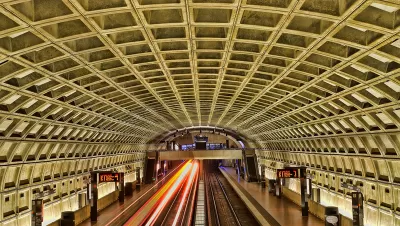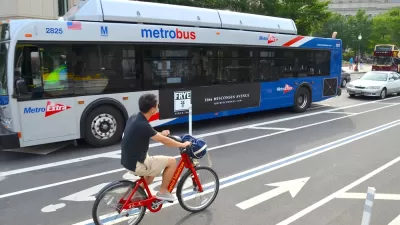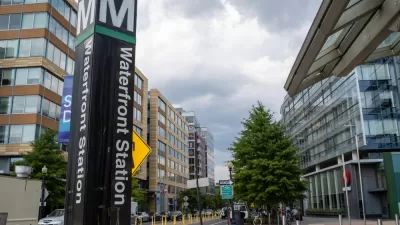While transit ridership is up around the country, the D.C. Metro has experienced the opposite. The agency's planners aren't worried about those numbers, though. They're excited about development that's bringing more residents to transit-served areas.

Factors like telecommuting and ride-sharing services seem to have taken a bite out of transit ridership in the Washington, D.C., region. And managerial troubles at Metro haven't helped. The agency's planners, though, are looking towards a bright long-term future.
They aren't so concerned about today's ridership numbers as they are about the number of people who will live and work within a half-mile of an existing transit stop. That's the commonly accepted radius of a "walk-shed"—the distance that commuters are willing to walk to get to a transit stop. Some estimates show that a full 86 percent of the office space under development in the metro area falls within a walk shed. Meanwhile, 90 percent of office leasing deals that were closed this year were for properties within a walk shed.
Much of this growth will take place in formerly moribund areas on the District's east side, with some stations expected to gain nearly 10,000 daily riders by 2020—for a total of 84,000 added trips per day and $240,000 in added revenue.
FULL STORY: Why — and at what stations — Metro expects ridership to grow

Alabama: Trump Terminates Settlements for Black Communities Harmed By Raw Sewage
Trump deemed the landmark civil rights agreement “illegal DEI and environmental justice policy.”

Planetizen Federal Action Tracker
A weekly monitor of how Trump’s orders and actions are impacting planners and planning in America.

The 120 Year Old Tiny Home Villages That Sheltered San Francisco’s Earthquake Refugees
More than a century ago, San Francisco mobilized to house thousands of residents displaced by the 1906 earthquake. Could their strategy offer a model for the present?

In Both Crashes and Crime, Public Transportation is Far Safer than Driving
Contrary to popular assumptions, public transportation has far lower crash and crime rates than automobile travel. For safer communities, improve and encourage transit travel.

Report: Zoning Reforms Should Complement Nashville’s Ambitious Transit Plan
Without reform, restrictive zoning codes will limit the impact of the city’s planned transit expansion and could exclude some of the residents who depend on transit the most.

Judge Orders Release of Frozen IRA, IIJA Funding
The decision is a victory for environmental groups who charged that freezing funds for critical infrastructure and disaster response programs caused “real and irreparable harm” to communities.
Urban Design for Planners 1: Software Tools
This six-course series explores essential urban design concepts using open source software and equips planners with the tools they need to participate fully in the urban design process.
Planning for Universal Design
Learn the tools for implementing Universal Design in planning regulations.
Clanton & Associates, Inc.
Jessamine County Fiscal Court
Institute for Housing and Urban Development Studies (IHS)
City of Grandview
Harvard GSD Executive Education
Toledo-Lucas County Plan Commissions
Salt Lake City
NYU Wagner Graduate School of Public Service





























